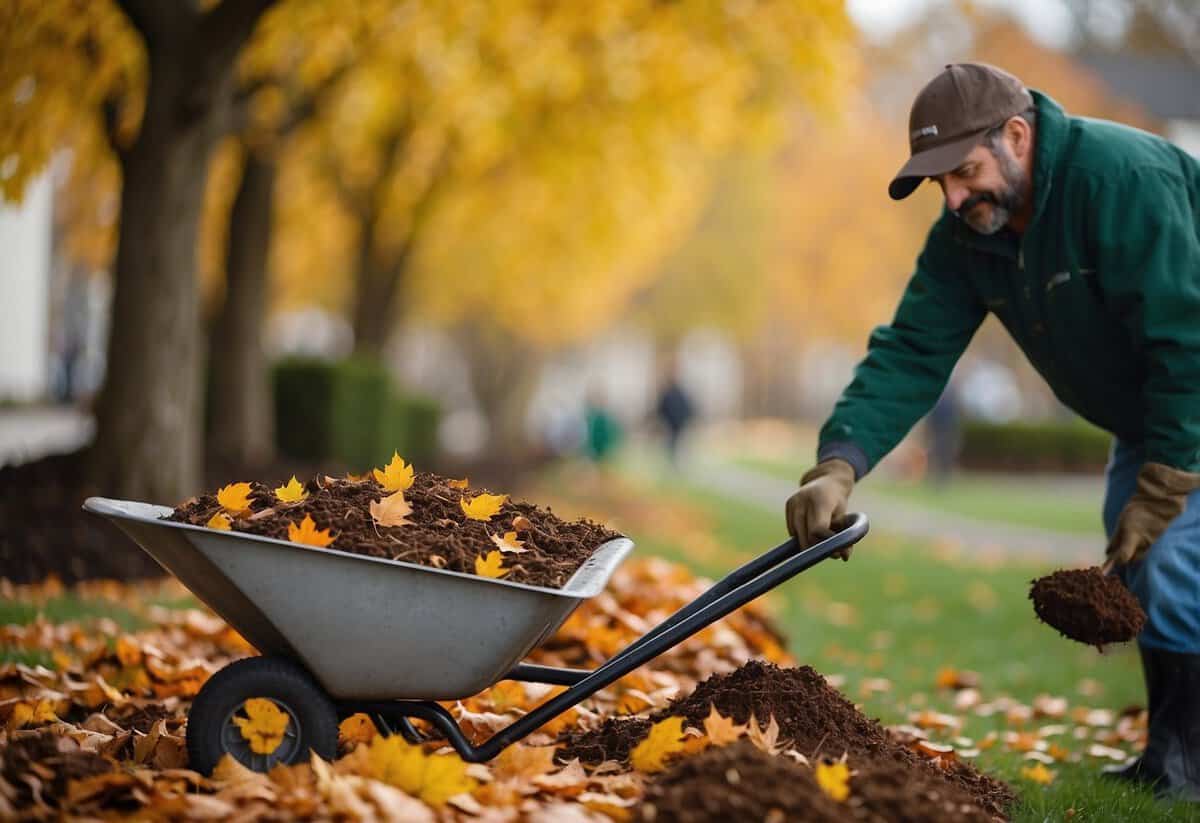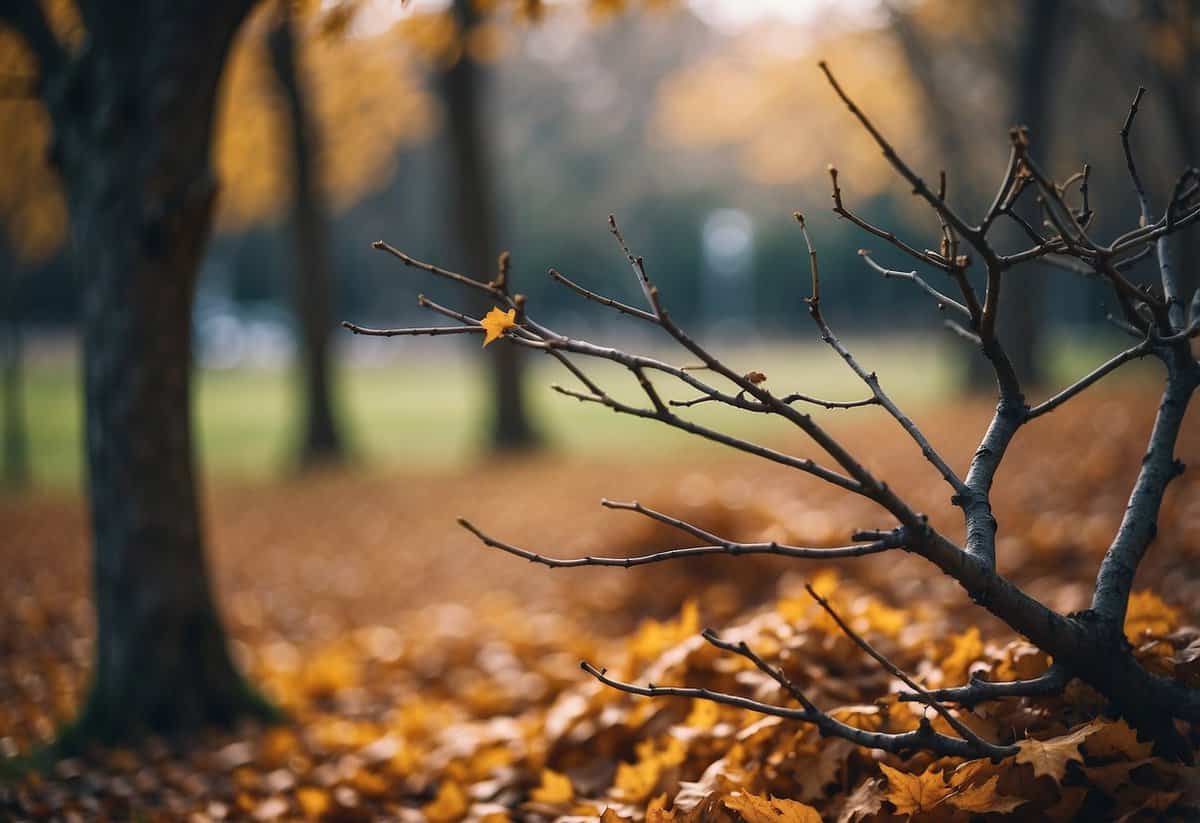November Garden Tips: Preparing Your Plants for Winter
November can be an exciting month in the garden. With the right tips, you can keep your garden thriving and ready for the colder months ahead. Whether you’re maintaining your lawn, planting garlic, or preparing your plants for winter, November presents unique opportunities.

Your garden requires special care as temperatures drop and the days get shorter. This article will help you understand the essential tasks to focus on, ensuring your plants stay healthy through the fall and into winter. Dive into these November garden tips to make the most of this transitional period.
1) Plant Winter Vegetables

November is a great time to plant winter vegetables. You can grow hardy crops like kale, spinach, and Brussels sprouts.
Garlic is also a perfect choice for November planting. Cover the garlic bed with a thick layer of mulch to protect it.
Don’t forget root vegetables. Carrots and parsnips can thrive in the cooler temperatures of November, ensuring you have fresh veggies through the winter months. See more tips on vegetables to plant in November.
2) Mulch Garden Beds

Adding mulch to your garden beds helps keep your plants warm during the cold months. It acts like a blanket, providing insulation and maintaining moisture in the soil.
A layer of 6-10 inches of mulch is recommended for optimal protection of your plants. This is especially important for perennials and shrubs that need extra warmth in November.
You can use materials like straw, leaves, or wood chips for mulching. This simple step can make a big difference in ensuring your garden stays healthy through the winter.
For more tips, check out this November gardening guide.
3) Protect Delicate Plants

Protecting delicate plants is key in November. Wrap young trees and shrubs in burlap to shield them from frost and wind.
Use mulch around the base of plants to insulate roots. A layer of 6 inches can make a big difference.
Consider using a windbreak for very fragile plants. This can be done with stakes and fabric.
4) Prune Dormant Trees

November is a great time to prune trees that have entered dormancy. This helps them get ready for strong growth in the spring.
When trees are dormant, pruning causes less stress. It allows arborists to clearly see the tree structure without dense foliage in the way.
Focus on removing any dead, dying, damaged, diseased, or deranged branches. This makes the tree healthier and stronger.
5) Clean Up Fallen Leaves

Raking up your fallen leaves is important for a healthy garden. Leaves left on the ground can smother grass and promote mold.
You can use the leaves you collect as mulch. This helps protect your garden and keeps it healthy over the winter.
Fallen leaves can also be added to your compost pile. They break down and enrich your soil for next year. For more ideas on using leaves in your garden, visit The Old Farmer’s Almanac.
6) Install Row Covers

Installing row covers in November helps protect your plants from frost. Use materials like polyester or polypropylene. These covers are light and allow sunlight and rain to reach your plants.
Gently drape the cover over your plants and secure the edges with garden clips or twine. Ensure the fabric is tight to prevent it from blowing away. This method provides a simple way to extend your growing season and shield your garden from cold weather.
7) Check Soil pH

Testing your soil pH is important for healthy plants. Collect soil samples from different areas in your garden. Use a clean tool to dig about 6-8 inches deep.
Mix the samples in a clean plastic bucket. Let the soil dry out. Use distilled water to prepare your soil mixture. This prevents tap water from affecting the pH reading.
You can use a soil pH meter for easy testing. Push the probe into the soil to get results. If you prefer, try a simple vinegar test at home to check if your soil is alkaline.
8) Start Composting

Composting is a great way to enrich your garden soil. Begin with a compost bin or tumbler placed in a partially sunny spot. Gather “green” materials like fruit scraps and lawn clippings and “brown” materials like leaves and old newspapers.
Layer the materials, using about three to four times more “browns” than “greens”. Keep the pile moist but not soggy. Turn it regularly to help with decomposition. By breaking down kitchen and yard waste, you can create nutrient-rich compost to boost your garden’s health. Learn more about composting tips from Epic Gardening for further guidance.
9) Control Garden Pests

Keeping your garden free of pests is key for healthy plants. Start by cleaning up fallen leaves and debris since pests often hide there.
Planting pest-repellent herbs like lavender and mint can help. These herbs deter many insects.
For a natural approach, consider using garden lime to repel critters like raccoons and skunks from your garden.
Remember to regularly check your plants for any signs of pests. Early detection helps manage infestations before they get out of control.
Using these simple tips, you can keep your garden healthy and thriving throughout November.
10) Harvest Late Crops

November is a great time to harvest late-season crops. Root vegetables like carrots and turnips are ready to be pulled from the soil.
Remember to dig up your remaining beets, as they thrive in cooler weather.
In some zones, you can still harvest kale, spinach, and cabbage well into November. Just make sure to pick them before a hard freeze hits.
Soil Preparation

Prepping your garden soil in November is essential for a successful growing season next year. Focus on improving the soil structure and balancing the soil pH to create the best environment for your plants.
Improving Soil Structure
Start by clearing out any rocks, debris, or leftover plants from the area. Use a spade to dig up and remove grass or weeds. It’s important to loosen the soil to a depth of 8-12 inches. This allows roots to penetrate deeply.
Add organic matter like compost or aged manure. These materials enrich the soil with nutrients and improve drainage. Spread a layer of compost about 2-3 inches thick and mix it into the soil.
Consider using a garden fork to break up large clumps, which further enhances soil aeration. If your soil is clay-heavy, adding sand can also help improve structure.
Balancing Soil pH
Soil pH is crucial for nutrient availability. Begin by testing your soil’s pH using a soil test kit. A pH of 6.0-7.0 is ideal for most plants.
To raise the pH of acidic soil, you can add lime. Use materials like ground limestone or wood ash. Spread these evenly over the soil and mix well.
To lower the pH of alkaline soil, sulfur or peat moss can be added. Again, distribute these materials evenly and work them into the top layer.
After making adjustments, retest your soil in a few weeks to ensure it reaches the desired pH level. Regular monitoring and adjusting will keep your garden thriving.
Plant Care During Frost

During frost, protecting your plants and choosing the right types to grow are crucial steps. Using effective frost protection techniques and selecting frost-resistant plants can help your garden thrive despite the cold temperatures.
Frost Protection Techniques
To shield your plants from frost, consider using frost blankets or row covers. These materials capture heat from the soil, creating a warmer microenvironment for your plants. Make sure to cover them completely, especially during nighttime when temperatures drop.
Another method is mulching. Applying a thick layer of mulch around the base of your plants insulates the roots and retains soil moisture. You can use straw, leaves, or even grass clippings.
For smaller gardens, using cloches or homemade plastic bottle covers can protect individual plants. For larger areas, you can install temporary hoop houses. Ensure good ventilation during the day to prevent overheating.
Choosing Frost-Resistant Plants
Opt for hardy perennials and cold-tolerant vegetables in your garden. Plants like kale, spinach, and Brussels sprouts can withstand lower temperatures. Additionally, root vegetables such as carrots and parsnips also do well under frost conditions.
Select frost-hardy herbs like thyme, sage, and lavender. These herbs not only survive the frost but often thrive. Consider planting evergreen shrubs such as hollies and junipers for garden structure that lasts through winter.
Check your plant hardiness zone to find the best-suited varieties for your area. You can find more information on plant hardiness zones and suitable plants for colder climates. Rich in resilience, these plants ensure your garden is lively even in frost.
Winterizing Your Garden

To prepare your garden for winter, focus on protecting plants with mulch and ensuring your tools are stored properly. These steps will help safeguard your garden from cold weather and make it easier to start planting again come spring.
Mulching for Winter Protection
Mulching is crucial for keeping your garden healthy through the winter. Use organic materials like straw, wood chips, or shredded leaves to cover your garden beds. Aim for a layer that is about 3-4 inches thick. This helps to insulate the soil, protect plant roots, and retain moisture.
Make sure to spread mulch around perennials and shrubs. This helps to stabilize soil temperature and prevents freezing and thawing cycles that can harm roots. Don’t place mulch directly against plant stems; leave a small gap to avoid rot.
Mulching is also useful for your vegetable garden. Add a layer of mulch after you’ve removed dead plants and weeds. This keeps the soil in good condition and ready for planting in the spring.
Storing Garden Tools
Properly storing your garden tools ensures they will be in good shape for the next growing season. Start by cleaning your tools thoroughly to remove any dirt, rust, or plant residue. Use a wire brush or steel wool to scrub off stubborn grime.
Once clean, dry your tools completely to prevent rust. Apply a light coat of oil to metal parts to keep them from corroding. Linseed oil works well for wooden handles, keeping them smooth and splinter-free.
Store tools in a dry, sheltered place like a shed or garage. Hang them on hooks or store them in a toolbox to keep them organized and accessible. Sharp tools like pruners or shears should be covered or stored safely to prevent accidents.
By taking these steps, you ensure your tools stay in good condition and are ready for use when the weather warms up.







